Contact Us
CiiS Lab
Johns Hopkins University
112 Hackerman Hall
3400 N. Charles Street
Baltimore, MD 21218
Directions
Lab Director
Russell Taylor
127 Hackerman Hall
rht@jhu.edu
For many years, my research has focused on all aspects of computer-integrated interventional medicine. Broadly, this research has included:
This interest was a natural ourgrowth of my earlier experiences imanaging robotics and automation technology groups at IBM T. J. Watson Research Center. Computer-based information processing, design, and process equipment has had a profound effect on high technology industries by enabling “closed loop” process control throughout the all phases of design, manufacturing, distribution, and field support. My basic hypothesis has been that this combination of information-based technologies can have just as profound an impact on computer-integrated medicine as it has had on computer-integrated manufacturing.
My initial explorations in this area included development of the prototype of what became Robodoc system for joint replacement surgery , as well as an early navigation system for craniofacial osteotomies. These experiences led me to establish the Computer-Assisted Surgery Group at IBM Research, where research activities included continued development of Robodoc and navigation systems, as well as the LARS system for minimally-invasive surgery, among other work.
I moved to Johns Hopkins in 1995, in large part to be closer to the surgeons, radiologists, and other clinicians who are so crucial in developing these systems. Since coming to JHU, I have worked in all aspects of the technology and systems associated with computer-integrated interventional medicine. Some of my more recent projects are listed below.
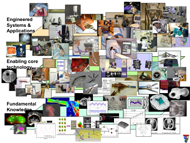 The NSF Engineering Research Center for Computer-Integrated Surgical Systems and Technology is a multi-institutional, multidisciplinary center whose focus is of basic science, computer-based technology, and engineered systems working cooperatively with surgeons to significantly change the way surgical procedures are carried out in the 21st century. Significant research focuses include modeling and analysis for treatment planning and control, robotics and human interfaces and systems for minimally-invasive, image-guided percutaneous therapy and microsurgery.
The NSF Engineering Research Center for Computer-Integrated Surgical Systems and Technology is a multi-institutional, multidisciplinary center whose focus is of basic science, computer-based technology, and engineered systems working cooperatively with surgeons to significantly change the way surgical procedures are carried out in the 21st century. Significant research focuses include modeling and analysis for treatment planning and control, robotics and human interfaces and systems for minimally-invasive, image-guided percutaneous therapy and microsurgery.
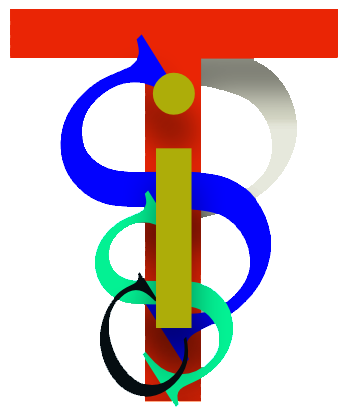 Primary funding: NSF Grant EEC9731478
Primary funding: NSF Grant EEC9731478
Key People: R. Taylor, G. Hager, A. Okamura, G. Fichtinger, P. Kazanzides, R. E. Cummings, L. Hummel, E. Ahmanson, and many, many others
 This is a collaborative effort between the CISST ERC and Intuitive Surgical (ISI) to develop an open-source software environment for medical robotics research. Although it will support Intuitive's DaVinci Surgical System, it is intended to provide a modular open interface for a variety of surgical robots, including those developed within the CISST ERC and those developed elsewhere.
This is a collaborative effort between the CISST ERC and Intuitive Surgical (ISI) to develop an open-source software environment for medical robotics research. Although it will support Intuitive's DaVinci Surgical System, it is intended to provide a modular open interface for a variety of surgical robots, including those developed within the CISST ERC and those developed elsewhere.
Primary funding: Supplement to NSF Grant EEC9731478
Key People: R. Taylor, P. Kazanzides, C. Hasser (ISI), S. DiMaio (ISI), A. Deguet, B. Vagvolgyi, R. Kumar
 This Bioengineering Research Partnership (BRP) focuses the efforts of highly qualified engineers and scientists from JHU (lead institution), Columbia and CMU, as well as surgeons from the JHU School of Medicine, to overcome human limitations in surgical practice. This project proposes to develop novel core technology and microsurgical tools with unique capability, as well as integrate computer assist systems. The effort will generate a computer assisted human user with enhanced microsurgical ability.
This Bioengineering Research Partnership (BRP) focuses the efforts of highly qualified engineers and scientists from JHU (lead institution), Columbia and CMU, as well as surgeons from the JHU School of Medicine, to overcome human limitations in surgical practice. This project proposes to develop novel core technology and microsurgical tools with unique capability, as well as integrate computer assist systems. The effort will generate a computer assisted human user with enhanced microsurgical ability.
Primary funding: NIH Grant BRP 1 R01 EB 007969-01 A1
Key People: R. Taylor, G. Hager, P. Kazanzides, J. Kang, I. Iordachita, J. Handa, P. Gehlbach, B. Vagvolgyi, E. Gower, C. Riviere(CMU); Students & Post-docs: S. Voros, M. Balicki, Z. Sun, J. Han, Y. Yang, S. Billings, D. Mirota
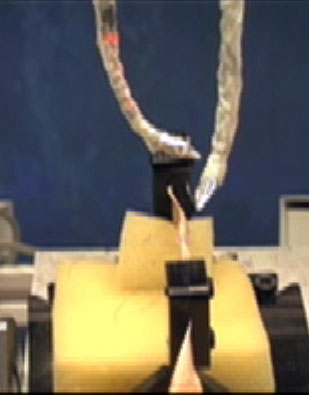 The goal of this joint project with Nabil Simaan (Columbia University) is development of high-dexterity snake-like robots for confined environmens such as the throat and pper airway
The goal of this joint project with Nabil Simaan (Columbia University) is development of high-dexterity snake-like robots for confined environmens such as the throat and pper airway
Primary funding: NIH Grant 1 R21 EB0045457-01
Key People: R. Taylor, N. Simaan (Columbia),P. Kazanzides, P. Flint; Students & Post-docs: A. Kapoor (now at NIH), K. Xu (Columbia), W. Wei (Columbia), P. Thienphrapa
 The goal of this project is to develop and validate novel algorithms for 3D CT-like reconstruction of bone images from mobile c-arm images. The novelty of the proposed methods will be their exploitation of prior knowledge in the form of prior CT scans when available and a statistical atlas when CT is not available. We use orthopaedic surgery as a focusing application.
The goal of this project is to develop and validate novel algorithms for 3D CT-like reconstruction of bone images from mobile c-arm images. The novelty of the proposed methods will be their exploitation of prior knowledge in the form of prior CT scans when available and a statistical atlas when CT is not available. We use orthopaedic surgery as a focusing application.
Primary funding: NIH Grant 1-R21 EB003616-01
Key People: J. Prince, R. Taylor; Students & Post-docs: O. Sadowsky,G. Chintalapani, L. Ellingsen, J. Lee
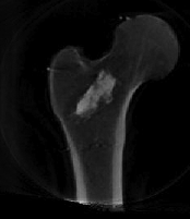 The long-range goal of this project is to develop an image-guided workstation with biomechanical planning and intraoperative updates for surgical interventions applied to osteoporotic bone augmentation, when the risk of bone fracture becomes imminent. Specifically in this proposal, we demonstrate the feasibility of bone augmentation by developing a surgical system for femur augmentation
The long-range goal of this project is to develop an image-guided workstation with biomechanical planning and intraoperative updates for surgical interventions applied to osteoporotic bone augmentation, when the risk of bone fracture becomes imminent. Specifically in this proposal, we demonstrate the feasibility of bone augmentation by developing a surgical system for femur augmentation
Primary funding: NIH R21
Key People: M. Armand, R. Taylor; Students & Post-docs: Y. Otake
 The goal of this project is integration of preoperative and on-line biomechanical analysis for periacetabular osteotomies with a CT based surgical navigation system, together with a patient study of the resulting system.
The goal of this project is integration of preoperative and on-line biomechanical analysis for periacetabular osteotomies with a CT based surgical navigation system, together with a patient study of the resulting system.
Primary funding: 1R21EB002881-0
Key People: M. Armand, R. Taylor; Students & Post-docs: Y. Otake, G. Chintalapani
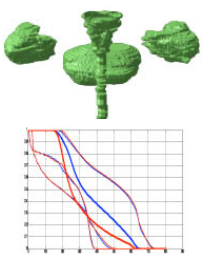 This joint project between the JHU CS Department and the JHU Radiation Oncology Department explores the statistical relationship between anatomic shape and treatment planning in radiation oncology. In closely related work, we explore advanced computational methods for radiation therapy treatment planning.
This joint project between the JHU CS Department and the JHU Radiation Oncology Department explores the statistical relationship between anatomic shape and treatment planning in radiation oncology. In closely related work, we explore advanced computational methods for radiation therapy treatment planning.
Primary funding: Charitable donation from Paul Maritz; JHU Radiation Oncology Dept.; JHU internal funds
Key People: R. Taylor, M. Kazhdan, T. McNutt, J. Wong; Students & Post-docs: P. Simari, B. Wu, R. Jacques
Note: This web page is still being reconstructed / updated. The old one was very out of date. I hope to have some material soon. In the interim, you can learn more about my research from the CISST ERC web site, from my CV, and from the (also under construction) web site for the Computer-Integrated Interventional Systems (CIIS) Lab.
 Enginering Research Center for Computer-Integrated Surgical Systems and Technology
Enginering Research Center for Computer-Integrated Surgical Systems and Technology
Copyright © Russell Taylor 2008